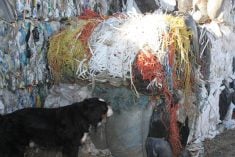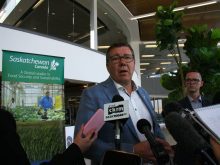Despite record farm debt levels in Canada, farmers have never been more asset-rich, says Statistics Canada.
But the percentage of income required to service debt last year also increased with interest rate increases and larger debt servicing expenses expected as early as this autumn.
Last year, farm equity rose $8.6 billion to $282.4 billion, a 3.1 percent increase, said the federal agency. Farm assets increased by more than $12 billion to $343 billion, it said, more than three times the increase in liabilities.
Government calculations show a 14 percent, $1.5 billion increase in farm income to $11.9 billion, based largely on higher livestock prices and a decline in farm input costs
Read Also

Alberta looks for agricultural plastic management input
Alberta provincial government giving agriculture industry a say through survey in shaping future plastics management
Farm debt rose to a record $66.4 billion last year, a six percent increase in one year that puts the debt level almost three times as high as it was 17 years ago when the debt began its annual rise, Statistics Canada reported in late May.
However, for its “balance sheet” calculation published last week, the agency excludes farm household debt so it pegs the farm debt in 2010 at $60.9 billion.
Even so, the agency says the strain on farmers’ ability to service their growing debt rose last year after a sharp drop in 2009.
“The interest coverage ratio (essentially the percentage of pretax net income required to service debt charges) increased last year so growing debt levels and income volatility did have an impact,” Statistics Canada agriculture division analyst Russell Kowaluk said in a June 20 interview.
In 2010, farmer return on equity remained stuck at 1.6 percent, less than half of the 3.3 percent return in 2008, which was a 12-year high.
Farm asset values were boosted by a strong $6.5 billion increase in the value of farm real estate to $232 billion and an almost $2 billion increase in national quota values to more than $31 billion.
Although many provinces have programs in place to try to reduce dairy quota values, the federal agency says the national value of quotas farmers buy to produce milk, chicken, turkeys and eggs continues to rise.














